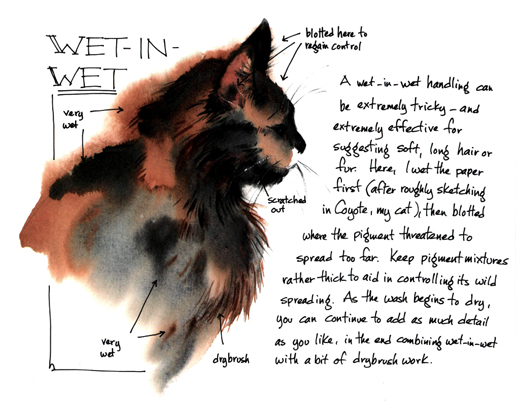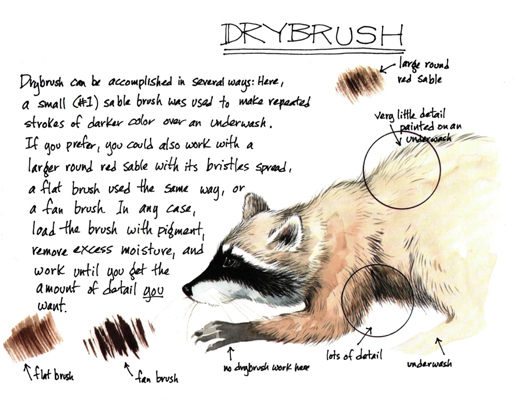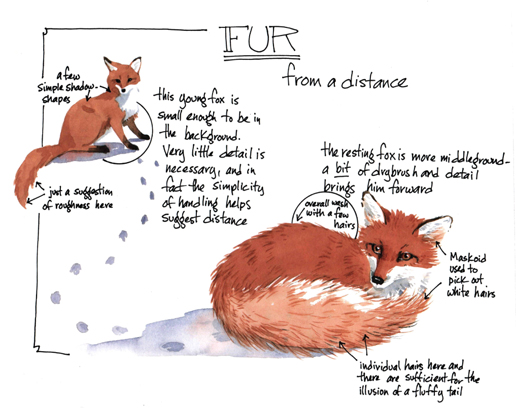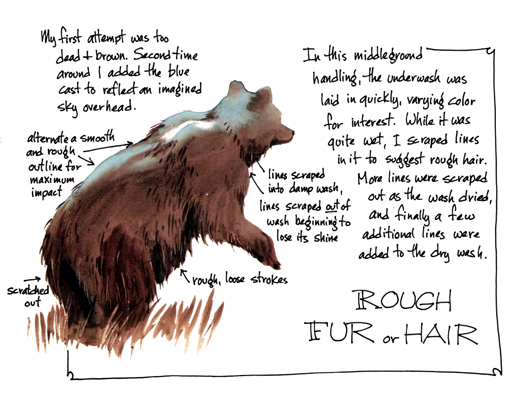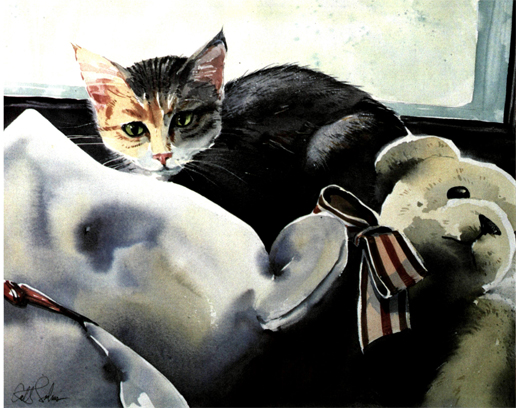
Margaret and Friends 15" × 22"

Margaret and Friends 15" × 22"
The burgeoning interest in wildlife art in the last few years makes this chapter—forgive the pun—a natural. And after capturing the spark of life in the eyes and the dynamics of the overall shape, fur texture adds most to your work.
Bears, raccoons, bison and other furred creatures are wonderful in watercolor; capturing them on paper is most satisfying. Deer, antelope, and other smoother-haired animals are perhaps less challenging (a local color wash with a bit of suggested detail is almost always sufficient). The longer-haired creatures pose a number of dilemmas. How much detail shall 1 attempt, a rough approximation of texture or an every-hair-on-its-back rendering? What technique best captures what I see—or what I want to see when I'm finished?
Part of your decision will rest, of course, on the distance of your subject. If the bear is in the back or middle ground, there's no need—and no way—to paint more than the roughest suggestion of fur. If he is your main subject, close as the family dog, then you'll probably want to suggest a bit more detail. (On the other hand, if the bear is as close as your dog, you're in a world of trouble.) There are still a variety of possible techniques to choose from, however; drybrush, wet-in-wet, straight washes or any combination of these may best satisfy you.
Smooth, shiny animals are fun to paint, as well. The family pets can stand in here for their wild cousins. Many of my own favorite paintings have been of my cats—selling one of these is out of the question. And then of course there is the variety of stuffed pets we find around us; the teddy bear decade is not over by a long shot, and these cuddly toys can add a friendly, approachable element to an otherwise overly serious still life.
